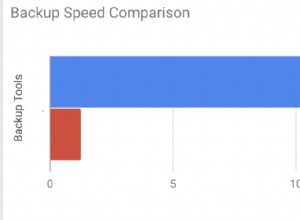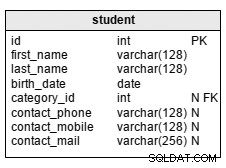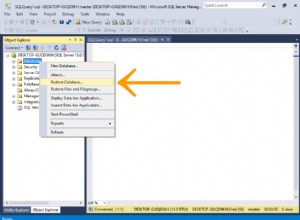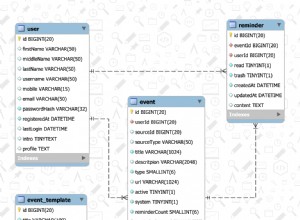Oto fajny samouczek, to jest to, czego potrzebujesz. (Źródło: kursyweb.net/php-mysql )
Zarejestruj się i pokaż użytkowników i odwiedzających online
Zliczanie użytkowników i odwiedzających online przy użyciu tabeli MySQL
W tym samouczku dowiesz się, jak się zarejestrować, liczyć i wyświetlać na swojej stronie internetowej liczbę użytkowników i odwiedzających.Zasadą jest to, że każdy użytkownik / gość jest zarejestrowany w pliku tekstowym lub bazie danych. Za każdym razem, gdy odwiedzana jest strona witryny, skrypt php usuwa wszystkie rekordy starsze niż określony czas (np. 2 minuty), dodaje bieżącego użytkownika / gościa i pobiera liczbę rekordów pozostałych do wyświetlenia.
Możesz przechowywać użytkowników i odwiedzających online w pliku na serwerze lub w tabeli MySQL. W tym przypadku uważam, że użycie pliku tekstowego do dodawania i odczytywania rekordów jest szybsze niż przechowywanie ich w tabeli MySQL, co wymaga więcej próśb.
Najpierw przedstawiono metodę z zapisem do pliku tekstowego na serwerze, a następnie metodę z tabelą MySQL.
Aby pobrać pliki ze skryptami przedstawionymi w tym samouczku, kliknij -> Count Online Użytkownicy i odwiedzający .
• Oba skrypty mogą być zawarte w plikach ".php" (za pomocą include() ) lub w „ .html" pliki (z <script> ) , jak widać na przykładach przedstawionych na dole tej strony; ale serwer musi działać w PHP.
Przechowywanie użytkowników i odwiedzających online w pliku tekstowym
Aby dodać rekordy do pliku na serwerze za pomocą PHP, musisz ustawić uprawnienia CHMOD 0766 (lub CHMOD 0777) do tego pliku, aby PHP mogło zapisywać w nim dane.
- Utwórz plik tekstowy na swoim serwerze (na przykład o nazwie
userson.txt) i podajCHMOD 0777uprawnienia (w aplikacji FTP kliknij prawym przyciskiem myszy ten plik, wybierz Właściwości, a następnie wybierzRead,WriteiExecuteopcje). - Utwórz plik PHP (o nazwie
usersontxt.php) mając poniższy kod, a następnie skopiuj ten plik php do tego samego katalogu couserson.txt.
Kod dla usersontxt.php ;
<?php
// Script Online Users and Visitors - http://coursesweb.net/php-mysql/
if(!isset($_SESSION)) session_start(); // start Session, if not already started
$filetxt = 'userson.txt'; // the file in which the online users /visitors are stored
$timeon = 120; // number of secconds to keep a user online
$sep = '^^'; // characters used to separate the user name and date-time
$vst_id = '-vst-'; // an identifier to know that it is a visitor, not logged user
/*
If you have an user registration script,
replace $_SESSION['nume'] with the variable in which the user name is stored.
You can get a free registration script from: http://coursesweb.net/php-mysql/register-login-script-users-online_s2
*/
// get the user name if it is logged, or the visitors IP (and add the identifier)
$uvon = isset($_SESSION['nume']) ? $_SESSION['nume'] : $_SERVER['SERVER_ADDR']. $vst_id;
$rgxvst = '/^([0-9\.]*)'. $vst_id. '/i'; // regexp to recognize the line with visitors
$nrvst = 0; // to store the number of visitors
// sets the row with the current user /visitor that must be added in $filetxt (and current timestamp)
$addrow[] = $uvon. $sep. time();
// check if the file from $filetxt exists and is writable
if(is_writable($filetxt)) {
// get into an array the lines added in $filetxt
$ar_rows = file($filetxt, FILE_IGNORE_NEW_LINES | FILE_SKIP_EMPTY_LINES);
$nrrows = count($ar_rows);
// number of rows
// if there is at least one line, parse the $ar_rows array
if($nrrows>0) {
for($i=0; $i<$nrrows; $i++) {
// get each line and separate the user /visitor and the timestamp
$ar_line = explode($sep, $ar_rows[$i]);
// add in $addrow array the records in last $timeon seconds
if($ar_line[0]!=$uvon && (intval($ar_line[1])+$timeon)>=time()) {
$addrow[] = $ar_rows[$i];
}
}
}
}
$nruvon = count($addrow); // total online
$usron = ''; // to store the name of logged users
// traverse $addrow to get the number of visitors and users
for($i=0; $i<$nruvon; $i++) {
if(preg_match($rgxvst, $addrow[$i])) $nrvst++; // increment the visitors
else {
// gets and stores the user's name
$ar_usron = explode($sep, $addrow[$i]);
$usron .= '<br/> - <i>'. $ar_usron[0]. '</i>';
}
}
$nrusr = $nruvon - $nrvst; // gets the users (total - visitors)
// the HTML code with data to be displayed
$reout = '<div id="uvon"><h4>Online: '. $nruvon. '</h4>Visitors: '. $nrvst. '<br/>Users: '. $nrusr. $usron. '</div>';
// write data in $filetxt
if(!file_put_contents($filetxt, implode("\n", $addrow))) $reout = 'Error: Recording file not exists, or is not writable';
// if access from <script>, with GET 'uvon=showon', adds the string to return into a JS statement
// in this way the script can also be included in .html files
if(isset($_GET['uvon']) && $_GET['uvon']=='showon') $reout = "document.write('$reout');";
echo $reout; // output /display the result
?>
- Jeśli chcesz dołączyć powyższy skrypt do pliku ".php", dodaj następujący kod w miejscu, w którym chcesz pokazać liczbę użytkowników i odwiedzających online:
4. Aby wyświetlić liczbę odwiedzających/użytkowników online w pliku „.html”, użyj tego kodu:
<script type="text/javascript" src="usersontxt.php?uvon=showon"></script>
Ten skrypt (i drugi prezentowany poniżej) współpracuje z $_SESSION. Na początku pliku PHP, w którym go używasz, musisz dodać:session_start();.Liczba użytkowników i odwiedzających online korzystających z tabeli MySQL
Aby zarejestrować, policzyć i wyświetlić liczbę odwiedzających i użytkowników online w tabeli MySQL, należy wykonać trzy zapytania SQL:Usuń rekordy starsze niż określony czas.Wstaw wiersz z nowym użytkownikiem/odwiedzającym lub, jeśli już jest wstawiono, Zaktualizuj znacznik czasu w jego kolumnie.Wybierz pozostałe wiersze.Oto kod skryptu, który używa tabeli MySQL (o nazwie „userson”) do przechowywania i wyświetlania użytkowników i odwiedzających online.
- Najpierw tworzymy tabelę „userson” z 2 kolumnami (uvon, dt). W kolumnie „uvon” przechowywana jest nazwa użytkownika (jeśli jest zalogowany) lub adres IP odwiedzającego. W kolumnie "dt" przechowywana jest liczba ze znacznikiem czasu (czas uniksowy), kiedy strona jest otwierana.
- Dodaj następujący kod do pliku php (na przykład o nazwie „create_userson.php”):
Kod dla create_userson.php :
<?php
header('Content-type: text/html; charset=utf-8');
// HERE add your data for connecting to MySQ database
$host = 'localhost'; // MySQL server address
$user = 'root'; // User name
$pass = 'password'; // User`s password
$dbname = 'database'; // Database name
// connect to the MySQL server
$conn = new mysqli($host, $user, $pass, $dbname);
// check connection
if (mysqli_connect_errno()) exit('Connect failed: '. mysqli_connect_error());
// sql query for CREATE "userson" TABLE
$sql = "CREATE TABLE `userson` (
`uvon` VARCHAR(32) PRIMARY KEY,
`dt` INT(10) UNSIGNED NOT NULL
) CHARACTER SET utf8 COLLATE utf8_general_ci";
// Performs the $sql query on the server to create the table
if ($conn->query($sql) === TRUE) echo 'Table "userson" successfully created';
else echo 'Error: '. $conn->error;
$conn->close();
?>
- Teraz tworzymy skrypt, który wstawia, usuwa i zaznacza dane w
usersontabela (Aby uzyskać wyjaśnienia dotyczące kodu, zobacz komentarze w skrypcie).
- Dodaj poniższy kod w innym pliku php (o nazwie
usersmysql.php):W obu plikach musisz dodać swoje dane osobowe do połączenia z bazą danych MySQL, w zmiennych:$host,$user,$passi$dbname.
Kod dla usersmysql.php:
<?php
// Script Online Users and Visitors - coursesweb.net/php-mysql/
if(!isset($_SESSION)) session_start(); // start Session, if not already started
// HERE add your data for connecting to MySQ database
$host = 'localhost'; // MySQL server address
$user = 'root'; // User name
$pass = 'password'; // User`s password
$dbname = 'database'; // Database name
/*
If you have an user registration script,
replace $_SESSION['nume'] with the variable in which the user name is stored.
You can get a free registration script from: http://coursesweb.net/php-mysql/register-login-script-users-online_s2
*/
// get the user name if it is logged, or the visitors IP (and add the identifier)
$vst_id = '-vst-'; // an identifier to know that it is a visitor, not logged user
$uvon = isset($_SESSION['nume']) ? $_SESSION['nume'] : $_SERVER['SERVER_ADDR']. $vst_id;
$rgxvst = '/^([0-9\.]*)'. $vst_id. '/i'; // regexp to recognize the rows with visitors
$dt = time(); // current timestamp
$timeon = 120; // number of secconds to keep a user online
$nrvst = 0; // to store the number of visitors
$nrusr = 0; // to store the number of usersrs
$usron = ''; // to store the name of logged users
// connect to the MySQL server
$conn = new mysqli($host, $user, $pass, $dbname);
// Define and execute the Delete, Insert/Update, and Select queries
$sqldel = "DELETE FROM `userson` WHERE `dt`<". ($dt - $timeon);
$sqliu = "INSERT INTO `userson` (`uvon`, `dt`) VALUES ('$uvon', $dt) ON DUPLICATE KEY UPDATE `dt`=$dt";
$sqlsel = "SELECT * FROM `userson`";
// Execute each query
if(!$conn->query($sqldel)) echo 'Error: '. $conn->error;
if(!$conn->query($sqliu)) echo 'Error: '. $conn->error;
$result = $conn->query($sqlsel);
// if the $result contains at least one row
if ($result->num_rows > 0) {
// traverse the sets of results and set the number of online visitors and users ($nrvst, $nrusr)
while($row = $result->fetch_assoc()) {
if(preg_match($rgxvst, $row['uvon'])) $nrvst++; // increment the visitors
else {
$nrusr++; // increment the users
$usron .= '<br/> - <i>'.$row['uvon']. '</i>'; // stores the user's name
}
}
}
$conn->close(); // close the MySQL connection
// the HTML code with data to be displayed
$reout = '<div id="uvon"><h4>Online: '. ($nrusr+$nrvst). '</h4>Visitors: '. $nrvst. '<br/>Users: '. $nrusr. $usron. '</div>';
// if access from <script>, with GET 'uvon=showon', adds the string to return into a JS statement
// in this way the script can also be included in .html files
if(isset($_GET['uvon']) && $_GET['uvon']=='showon') $reout = "document.write('$reout');";
echo $reout; // output /display the result
?>
-
Po utworzeniu tych dwóch plików php na serwerze uruchom „create_userson.php” w przeglądarce, aby utworzyć tabelę „userson”.
-
Dołącz
usersmysql.phpplik w pliku php, w którym chcesz wyświetlić liczbę użytkowników i odwiedzających online. -
Lub, jeśli chcesz wstawić go do pliku ".html", dodaj ten kod:
Przykłady użycia tych skryptów
• Dołączenie „usersontxt.php` do pliku php:
Licznik użytkowników i odwiedzających online
• Dołączenie „usersmysql.php” do pliku html:
<!doctype html>
<html>
<head>
<meta charset="utf-8" />
<title>Counter Online Users and Visitors</title>
<meta name="description" content="PHP script to count and show the number of online users and visitors" />
<meta name="keywords" content="online users, online visitors" />
</head>
<body>
<!-- Includes the script ("usersontxt.php", or "usersmysql.php") -->
<script type="text/javascript" src="usersmysql.php?uvon=showon"></script>
</body>
</html>
Oba skrypty (z przechowywaniem danych w pliku tekstowym na serwerze lub w tabeli MySQL) wyświetlą wynik w następujący sposób:Online:5
Odwiedzający:3Użytkownicy:2
- MarPlo
- Mariusz




